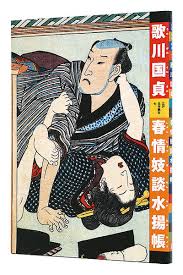Festival Scene with Dancer, Samurai Figurine, and Shoki Banner - 歌川 国貞 Poster.
Festival Scene with Dancer, Samurai Figurine, and Shoki Banner - 歌川 国貞 Poster. - A5(148×210) / なし is backordered and will ship as soon as it is back in stock.
【出荷予定について】
※土日祝定休
製品説明
製品説明
artgraph.オリジナルの名画のアートポスター&アートフレーム
EPSON社製のアート作品で採用される品質の用紙を使用して印刷しております。
作品向けに開発された用紙として、劣化や褪色が少なくインテリアポスターの中でも最高品質のジークレープリントというカテゴリに属する用紙です。
画材用紙のようなテクスチャーがプリント作品の立体感を表現しまるで本物のような複製画となっております。
- 用紙の重量: 190 g/m²
- ジークレー版画(インクジェットプリント)
- 作品やサイズによって余白の幅を調整しております。
※原画データのサイズよって、印刷が荒くなり過ぎてしまうサイズをオーダーの場合はご連絡を差し上げております。
※サイズ展開以上の大きさをご希望の場合は、直接ご相談ください。
| 作品名 | Festival Scene with Dancer, Samurai Figurine, and Shoki Banner (踊り子、武者人形、鍾馗幟のある祭りの場面) |
| 作家名 | Utagawa Kunisada(歌川 国貞) |
| 制作年月日 | |
| 関連キーワード | 侍 日本の文様 歌川国貞 日本の美術 侍 1830年代 周囲 美術 アジア 旗 下 曲がった 黒 歌川国貞 あ行 日本 浮世絵 19世紀 レトロ 和風 アート ポスター アートポスター アートパネル インテリア おしゃれ 絵画 絵 名画 風景画 風景 雑貨 ヴィンテージ レトロ 玄関 リビング ダイニング 寝室、台所、トイレ、玄関などご自身用にも、モデルルーム、オフィス、事務所、お店、ホテル、カフェなどのディスプレイ用の複製作品としてご利用もいただいております。新築、誕生日などのお祝い、プレゼントとしてもご利用いただいております。 |
| Related Keywords | samurai, japanese patterns, utagawa kunisada, japanese art samurai, 1830s, around, art, asia, banner, below, bent, black |
| 管理番号 | 5-90 |
商品写真はできる限り実物の色に近づけるよう徹底しておりますが、 お使いのモニター設定、お部屋の照明等により実際の商品と色味が異なる場合がございます。
素材ごとに異なるニュアンスが生まれることもございますが、風合いとしてお楽しみいただければ幸いです。
お届けについて
お届けについて
出荷までの期間はポスターのみは3営業日、額装込み・キャンバス製品は10営業日程度いただいております。
それ以外の製品は10〜14営業日程度いただいております。
営業日:月〜金曜
定休日 : 土・日曜日・祝日
※サイズ・色・点数によってお届けに通常より長くお時間をいただく場合がございます。お急ぎの場合や複数点数のご購入をご検討の場合は事前にお問い合わせください。
返金交換について
返金交換について
返金・交換に関して
到着した製品に不具合がございましたら到着より7日以内に速やかにご連絡ください。
■返品・交換などの連絡先
info@artgraph.jp
返金
商品に不具合が有った場合は上記「返金・交換」をご覧下さい。
キャンセル
生産開始前であればキャンセル・返金可能ですが、生産が終了している場合は全額ご請求とさせていただきます
詳しくはこちら
安心してご注文いただけます。
Payment methods
artgraph.では運営側でクレジットカード情報を保存せず、お客様のクレジットカード情報にアクセスすることはできませんので安心してご利用ください。

Utagawa Kunisada
Utagawa Kunisada was an ukiyo-e artist active from the late Edo period to the early Meiji period, and later took the name Utagawa Toyokuni III. He left behind a huge number of works in a wide range of genres, including actor paintings, portraits of beautiful women, landscapes, and warrior paintings, and was known as the "Prince of Ukiyo-e" due to his prolificacy and popularity. His works are characterized by a refined style, vibrant colors, and expressions that sensitively capture the trends of the time.
Utagawa Kunisada Biography
- Born in 1786 in Edo (present-day Tokyo)
- In 1800, he became a disciple of the first Utagawa Toyokuni.
- He began publishing actor paintings around 1807.
- From the 1820s, he also gained popularity for his portraits of beautiful women.
- In 1844, he took the name Utagawa Toyokuni III.
- Died in 1865 (aged 78)
Representative works
-
Actor pictures:
- "Fifty-three Stations of the Tokaido" (1833-1834), a collaboration with Utagawa Hiroshige
- "An Anthology of Thirty-six Poems from Mitate" (An Anthology of Thirty-six Poems from Mitate)
- "Masaoka from Nakamura Shikan's "Kyara Sendai Hagi"" (Masaoka from Nakamura Shikan's "Kyara Sendai Hagi")
-
Portrait of a beautiful woman:
- "Twelve Months of Modern Beauty" (Twelve Months of Modern Beauty)
- "Seiro Twelve Hours" (Seiro Twelve Hours)
- "Lady's Guest" (Lady's Guest)
Kunisada's style and achievements
Kunisada's works are characterized by refined lines, vivid colors, and precise depictions of the characteristics of actors and beautiful women. He excelled at expressing the realism of the stage by meticulously depicting the expressions, gestures, and costumes of the actors . In his portraits of beautiful women, he also depicted glamorous fashions and hairstyles that were popular at the time, captivating the people of Edo.
Kunisada 's prolific output and wide range of subjects made him a central figure in the world of ukiyo-e in the late Edo period. His works reflect the popular culture of the time and remain valuable historical documents even today. Many talented ukiyo-e artists came from his school and made a major contribution to the development of the Utagawa school.
Kunisada is one of the great masters of ukiyo-e prints from the late Edo period, and his works occupy an important place in the history of Japanese art.



























































